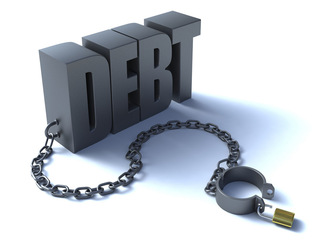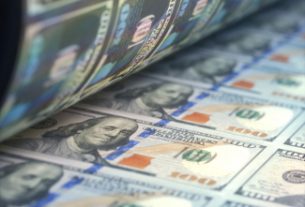A recent publication by the Congressional Budget Office (CBO) highlighted the grave danger that faces the US economy as the government’s debt position continues to spiral out of control. The US national debt has already increased to more than 100% of GDP, and under certain scenarios CBO predicts that could reach as high as 165% in just 20 years. That is an enormous increase that should greatly worry every American.
It’s important to remember, too, that projections of any sort, and especially from CBO, often tend to be conservative, trying to put the rosiest spin on growth in government spending and debt. One need only look at CBO’s budget projections from 1999 to see that. In 1999 CBO projected that the government would continue running surpluses into the future, with surpluses rising to $413 billion by 2009. The national debt was expected to drop to $865 billion by the end of 2009.
In reality, fiscal year 2009 saw a deficit of $1.4 trillion, and the national debt was over $12 trillion by the end of calendar year 2009. That’s quite a difference, right? Take everything CBO projects with a grain of salt and assume that things will be much worse. When George W. Bush took office, not many people would have though the national debt would double in just eight years, but it did. Same under Obama. And now it looks likely to happen under Trump too, as Congress just can’t say no to more government spending and adding to the $21 trillion national debt.
Those who say that excessive levels of government debt aren’t a problem like to point to the example of Japan, which has a level of government debt far in excess of 200% of GDP. “Japan’s debt level is far higher, yet it’s not collapsing,” is a common retort. Yet that overlooks a couple of crucial differences between Japan and the US.
For one thing, Japan’s debt level wasn’t always that high. It really only skyrocketed after the Japanese asset bubble collapse in 1991. The years after that collapse were known as the Lost Score, because it saw 20 years of declining GDP, declining wages, and overall economic stagnation that accompanied that huge rise in debt. That’s something the US wants to avoid, not emulate.
The Japanese also have a culture of saving, which is why somewhere around 90% of Japanese government bonds are in the hands of Japanese citizens. The Japanese save their money and use it to buy government bonds. They also have very long life expectancies, so those bonds haven’t been cashed in yet by debt holders or their heirs. Expect to see some real difficulties when that occurs, but for now that problem is being avoided.
The US is completely different, with about 40% of its government debt, or over $6.2 trillion, being held by foreigners. That puts the US government at the mercy of large debt holders such as China and Japan. And as the government continues to issue more and more debt, that dependency on foreigners will continue to grow.
None of this paints a pretty picture, and as the debt problem continues to spiral out of control it will be American taxpayers who end up shouldering the burden as more and more debt issuance will result in higher and higher taxes in the future. That’s why it’s more important than ever that investors take the necessary steps now to save and invest in wealth-protecting assets such as gold. Higher taxation and debt levels in the future will erode the ability to save and invest. Taking the right steps now to add those ounces of gold to your investment portfolio will save you a lot of financial pain in the future.
This article was originally posted on Goldco.





